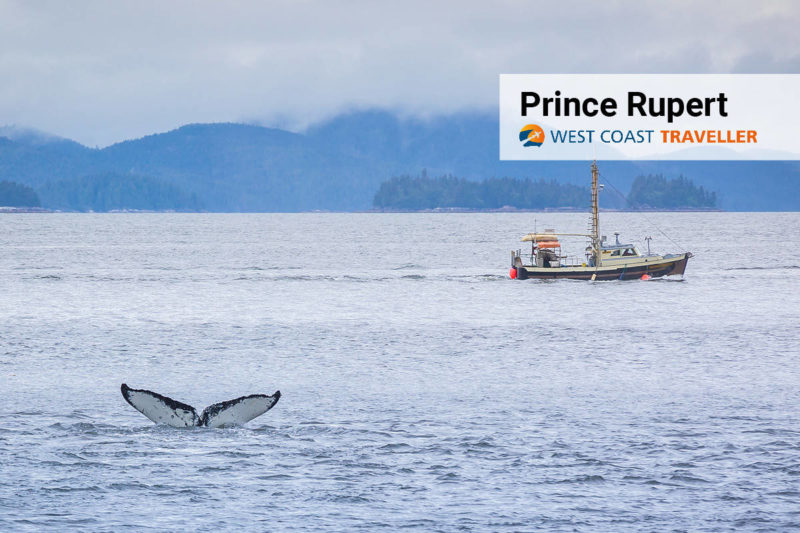Prince Rupert is a port city on BC’s northwest coast that’s a gateway to wilderness like the Khutzeymateen Grizzly Sanctuary. The Museum of Northern BC showcases the region’s nature and cultural heritage. The North Pacific Cannery traces the city’s salmon-canning industry. Humpback whales swim in the fish-filled waters offshore to cap off the unbelievable surroundings that will greet visitors upon arrival.
Just 125 years ago, a visitor to the area where Prince Rupert now sits would have seen not one large, single community but rather a number of small Tsimshian villages that served as seasonal encampments during times of food harvesting. Today, coastal Indigenous culture enriches Prince Rupert’s existence and continues to resonate with legend and connection to the land and sea.
The sheltered harbour on which Prince Rupert sits today was especially ideal for protection during the winter months, and in the early 1800s, also attracted attention from explorers.
Today, travelling by train is a wonderful and relaxing way to make the trip in and out of Prince Rupert. Seats on the VIA Rail’s Jasper-Prince Rupert passenger train are spacious and provide views of the gorgeous Skeena River scenery just outside your window. The observation car is a wonderful feature that gives you full, 360-degree views of mountains, waterfalls and wildlife.
Prince Rupert has a thriving scene of musicians and performers that can often be found by stopping into a local pub or restaurant, or by perusing the schedule of a local venue. The venues are able to accommodate almost any performance – from the smaller, more intimate, show at one of the local cafés, to dance competitions in the local Lester Centre.
Facts
• Prince Rupert found itself sustained by the local resources, becoming known as the “Halibut Capital of the World.” Dozens of canneries sprang up along the coast to process abundant seafood harvests, employing hundreds of people.
• A nautical disaster that resonated around the globe in 1912 also had repercussions for Prince Rupert’s grand future, when Charles Hays gallantly handed his wife and daughter into a lifeboat on the Titanic, while he himself remained on board to perish. Without its main promoter, the fledgling city lost some of its grander ambitions and instead evolved into a mainstay of the fishing and boatbuilding
• The early 1940s saw Prince Rupert flooded with a new energy, as thousands of young troops and industrial workers landed in the coastal city.
• A main reason the community has developed over the past century is its safe, deep, ice-free anchorage; its location three days closer to Asian ports also gives it a strategic advantage over other North American ports and international shippers have taken note. The Prince Rupert Port Authority (PRPA) has spent the last decade encouraging development of a multi-crane container port, as well as accommodating export facilities for grain, coal and wood pellets. Prince Rupert is also a summer cruise ship destination.
Prince Rupert summers are cool while winters are mild and damp.
(Check this website for current details on travel.)
Getting Here
Driving: At 1,494.4 km (577 mi) from Vancouver, travel time to Prince Rupert is about 17 hours via BC-16 W.











 Leslieville: A tiny hamlet with a beautiful stream
Leslieville: A tiny hamlet with a beautiful stream